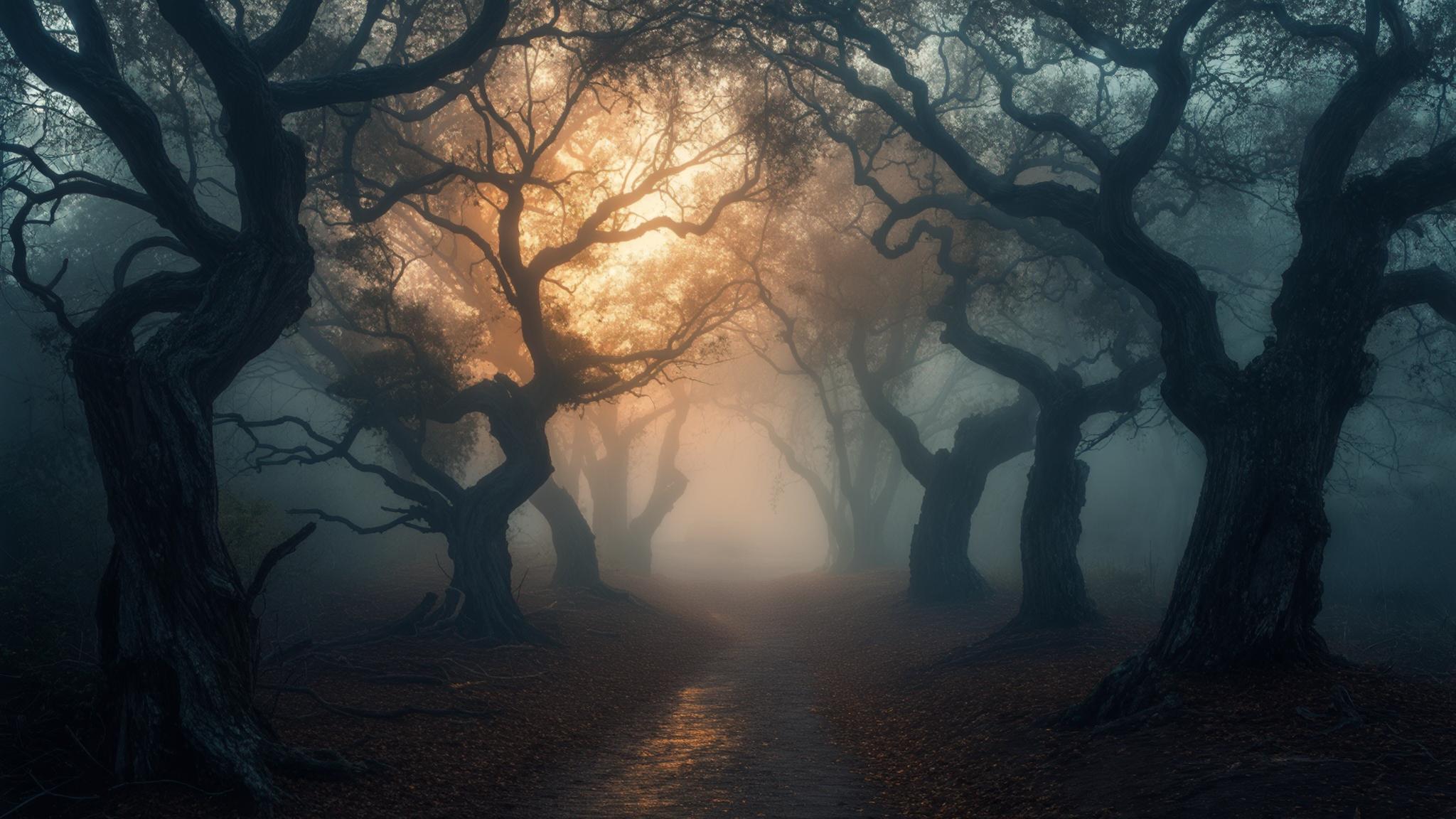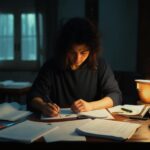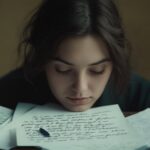Hi, Friend! Jen Glantz here. I’m a bestselling author, the first ever bridesmaid for hire and have been hired by hundreds of brides all over the world. Let’s talk about visual poem examples.
Visual poetry represents a revolutionary art form where text arrangement matters as much as the words themselves. We’re experiencing what experts call “the greatest age of visual poetry,” with digital tools expanding creative possibilities beyond traditional boundaries. This comprehensive guide examines 25 standout examples across five distinct categories, providing evaluation criteria and detailed analysis to help you understand what makes visual poetry effective and meaningful.
According to the Poetry Foundation, “We are living through what might be the greatest age of visual poetry” (https://www.poetryfoundation.org/poetrymagazine/articles/69141/visual-poetry-today). This statement hit me personally when I discovered my first concrete poem in college – watching words physically form the shape of what they described felt revolutionary. That moment changed how I understood the relationship between meaning and presentation, sparking a fascination with how visual elements can amplify textual impact.
Visual poetry challenges traditional reading methods by combining literary expression with visual design. From ancient Greek pattern poems shaped like altars to modern AR installations, this art form continues evolving through technological advancement and creative innovation. Understanding these examples will enhance your appreciation for experimental literature while providing insights into effective visual communication strategies that visual poetry pioneers have developed.
Bring creativity to your celebration with our AI Wedding Planner
Visual poetry evaluation requires considering six key criteria: visual impact, text-image integration, accessibility, innovation, emotional resonance, and technical execution. Modern visual poetry spans five main categories: typographic poetry, image-text hybrids, interactive digital works, environmental installations, and experimental conceptual forms.
Simplify complex event planning with our Wedding Seating Chart Maker
TL;DR
- Visual poetry combines textual content with visual design elements to create multi-layered artistic experiences
- Effective evaluation requires assessing visual impact, text-image integration, accessibility, innovation, emotional resonance, and technical execution
- Five main categories exist: typographic poetry, image-text hybrids, interactive digital works, environmental installations, and experimental forms
- Digital technology has expanded visual poetry possibilities through AR, interactive web experiences, and kinetic typography
- Accessibility considerations vary widely, from highly accessible social media formats to specialized installations requiring specific technology or locations
- Innovation levels range from traditional concrete poetry maintaining relevance to cutting-edge AR and AI-generated works
- Environmental and installation poetry transforms public spaces while addressing contemporary themes
- Experimental forms push boundaries through code poetry, multilingual works, and conceptual instruction pieces
Quick Resources
What You Need to Consider When Evaluating Visual Poetry Examples
Evaluating visual poetry examples requires understanding six essential criteria that determine effectiveness and impact. Visual design should enhance rather than distract from meaning, while text and image elements must work together seamlessly. Accessibility ensures communication with intended audiences, innovation pushes creative boundaries, emotional resonance creates multi-layered experiences, and technical execution demonstrates craftsmanship in both writing and visual design.
Visual impact assessment focuses on how typography, spacing, color, and arrangement contribute to overall message delivery. Text-image integration evaluation examines the symbiotic relationship where neither element could stand alone as effectively.
| Evaluation Criteria | Key Questions | Assessment Focus |
|---|---|---|
| Visual Impact | Does the design enhance or distract from meaning? | Typography, spacing, color, arrangement |
| Text-Image Integration | Do elements work symbiotically together? | Seamless blending, mutual enhancement |
| Accessibility | Can the intended audience engage effectively? | Readability, platform optimization, barriers |
| Innovation | Does it push creative boundaries meaningfully? | Originality, technical advancement, risk-taking |
| Emotional Resonance | Does it create multi-layered experiences? | Depth, connection, lasting impact |
| Technical Execution | Is craftsmanship evident in all elements? | Writing quality, design skill, presentation |
Visual Impact and Design Fundamentals
Strong visual poetry creates immediate impact through intentional design choices. Typography, spacing, color, and arrangement must serve the poem’s meaning rather than functioning as mere decoration. The most effective works demonstrate purposeful visual decisions that amplify textual content while maintaining aesthetic appeal.
Get expert support on visual design decisions from our Free 24/7 Wedding Hotline (Free)
Typography choices should reflect and enhance the poem’s emotional tone and thematic content. Color and spacing decisions create visual hierarchy that guides reader attention and interpretation.
Text-Image Integration Strategies
Successful visual poetry achieves seamless integration between textual and visual elements. Understanding what is visual poetry means recognizing how the best examples create symbiotic relationships where removing either component would significantly diminish the work’s impact. This integration should amplify emotional or conceptual meaning rather than creating competing focal points.
Integration quality determines whether visual elements enhance comprehension or create distraction. Symbiotic relationships between text and image create unified artistic experiences that exceed individual component effectiveness.
Align your wedding vision with flawless coordination using our AI Wedding Planner
Consider Maya Angelou’s “On the Pulse of Morning,” where the text was presented as a flowing river on the page, with words cascading down in curved lines that mirrored the poem’s themes of continuity and hope. The visual flow enhanced the reader’s understanding of the poem’s message about time and resilience, demonstrating how layout can amplify meaning without overwhelming the words themselves.
Accessibility and Readability Standards
Visual poetry must balance experimental approaches with effective communication. While pushing creative boundaries, works should remain accessible to their intended audiences. Consideration of viewing contexts, digital literacy requirements, and physical accessibility ensures broader engagement with the artistic content.
Readability assessment considers font choices, contrast levels, and viewing platform optimization. Accessibility evaluation includes physical location requirements, technology dependencies, and audience-specific knowledge needs.
Ensure visual harmony with the help of our Wedding Seating Chart Maker
Typographic Poetry: Shape and Form Examples
Typographic poetry uses text arrangement, font choices, and spatial relationships as primary creative tools. This category includes concrete poetry classics, calligraphic works, minimalist arrangements, kinetic typography, and three-dimensional text sculptures. These visual poems demonstrate how typography itself becomes sculptural, creating meaning through spatial arrangement and visual presentation.
Typography functions as both content delivery mechanism and visual art form in these works. Spatial arrangement creates meaning through positioning, spacing, and dimensional relationships between text elements.
1. Concrete Poetry Classics
Traditional concrete poems use words to form recognizable shapes or patterns, with typography functioning as sculpture. These foundational works established visual poetry principles by demonstrating how spatial arrangement can amplify textual meaning. Classic examples include Eugen Gomringer’s “Silence,” where missing text creates the most powerful element.
Word arrangement creates visual representations that mirror or enhance textual content. Missing or negative space often carries equal importance to present text in creating overall meaning.
2. Calligraphic Visual Poems
Calligraphic visual poetry incorporates handwritten elements or traditional calligraphy styles to enhance meaning. These works blend traditional writing arts with contemporary poetic expression, using script quality, letter formation, and handwriting characteristics as expressive elements that complement textual content.
Handwriting style and script quality become expressive elements that enhance textual meaning. Traditional calligraphy techniques merge with contemporary poetic content to create hybrid art forms.
3. Minimalist Text Arrangements
Minimalist visual poetry uses sparse, carefully positioned words with white space as a compositional element. These examples of visual poetry create impact through restraint and precision, demonstrating how strategic placement and spacing can generate profound emotional responses. Robert Creeley’s “Loneliness” exemplifies this approach through cascading word placement.
White space functions as active compositional element rather than empty background. Strategic word positioning creates visual metaphors that reinforce textual themes.
4. Kinetic Typography Poetry
Digital kinetic poetry features text that moves, transforms, or animates to create temporal visual experiences. These works unfold over time, using motion as a meaning-making element. Examples include installations where words decay, fragment, or evolve, with movement patterns reflecting thematic content about change, mortality, or transformation.
Temporal elements add time-based meaning layers that static text cannot achieve. Animation patterns and movement timing become integral components of poetic expression.
5. 3D Text Sculptures
Three-dimensional text poetry exists in physical or digital space, creating sculptural experiences that readers can navigate. These works transform words into architectural elements, allowing physical interaction with textual content. Maya Lin’s “Love Letters” bronze installation exemplifies how dimensional text creates immersive poetic environments.
Physical dimensionality allows reader navigation and spatial interaction with textual content. Sculptural text creates immersive environments that engage multiple sensory experiences.
Image-Text Hybrid Works That Blend Media
Image-text hybrid works integrate visual imagery with poetic text, creating unified artistic experiences where both elements are essential. This category includes photo-poetry combinations, collage works, infographic poetry, comic strip approaches, and digital art integration. These examples demonstrate how different media can enhance rather than compete with textual content. Understanding visual poetry through these hybrid approaches reveals the medium’s versatility and contemporary relevance. Modern visual poetry practitioners often combine traditional poetic techniques with digital media to create works that speak to contemporary audiences while honoring the form’s historical foundations.
Media integration requires balancing visual and textual elements to avoid one overwhelming the other. Hybrid approaches expand expressive possibilities beyond what either medium could achieve independently.
6. Photo-Poetry Combinations
Photo-poetry works integrate original photography with poetic text, where both elements are created specifically to work together. These pieces demonstrate how visual imagery can provide context, mood, or counterpoint to textual content. Urban solitude series combining stark city photography with loneliness-themed text exemplify this approach.
Photography and text must be conceived as unified artistic vision rather than separate elements combined afterward. Visual-textual relationships can provide context, create contrast, or establish emotional atmosphere.
7. Collage Poetry
Mixed-media collage poetry combines found images, textures, and text to create layered visual-poetic experiences. These works often explore themes of memory, fragmentation, and cultural commentary through assembled materials. The fragmented visual approach mirrors conceptual themes while creating rich textural experiences.
Found materials and assembled elements create meaning through juxtaposition and layering. Fragmentation techniques mirror thematic content while providing rich visual textures.
8. Infographic Poetry
Infographic poetry applies data visualization techniques to poetic content, creating works that inform and inspire simultaneously. Climate data sonnets overlaying traditional poetic forms on temperature graphs demonstrate how scientific information can enhance rather than diminish poetic impact through visual presentation. These examples of visual poetry show how contemporary concerns can be addressed through innovative formal approaches.
Data visualization techniques transform statistical information into emotionally resonant artistic content. Scientific accuracy must be maintained while creating aesthetically compelling visual presentations.
“Temperature Rising” by eco-poet Sarah Chen presents climate data as a traditional sonnet, with each line’s font size corresponding to global temperature increases by decade. The visual crescendo created by increasingly large text mirrors the urgency of climate change, while maintaining the sonnet’s traditional rhyme scheme. This approach transforms abstract data into visceral emotional experience through typography.
9. Comic Strip Poetry
Sequential art approaches applied to poetry use panels and visual narrative techniques to tell poetic stories. Commuter dreams series showing mundane subway rides with surreal thought bubbles demonstrates how familiar comic formats can make experimental poetry more accessible while maintaining artistic integrity.
Sequential panel structure creates narrative progression that enhances poetic storytelling. Familiar comic format conventions make experimental content more accessible to broader audiences.
10. Digital Art Poetry
Computer-generated or digitally manipulated visual elements combined with text create contemporary visual poetry that leverages digital tools’ unique capabilities. These works often explore themes of technology, identity, and digital culture while demonstrating how digital media can enhance poetic expression.
Digital manipulation techniques create visual effects impossible through traditional media. Technology themes often align with digital creation methods to create conceptually unified works.
Interactive and Digital Visual Poetry Innovations
Interactive and digital visual poetry leverages technology to create participatory experiences where readers become co-creators. This category includes web-based interactive poems, augmented reality works, social media optimized pieces, QR code integration, and video poetry. These innovations demonstrate how digital platforms can expand poetic possibilities while maintaining literary integrity. The evolution of visual poetry in digital spaces reflects broader cultural shifts toward interactive media and participatory art forms. Contemporary visual poetry artists often work across multiple platforms, creating works that exist simultaneously in physical and digital realms. These cross-platform approaches allow visual poetry to reach new audiences while experimenting with emerging technologies and communication methods.
Interactive elements transform readers from passive consumers into active participants in meaning creation. Digital platforms enable new forms of poetic expression while requiring consideration of technological accessibility and platform limitations.
11. Web-Based Interactive Poems
Digital works that respond to user input create personalized visual-poetic experiences through technology. “Choose Your Grief” allows readers to select emotional responses to loss, with each choice revealing different visual metaphors and poetic fragments while background colors shift based on selections.
User input mechanisms create branching narratives that personalize poetic experiences. Interactive elements must enhance rather than distract from core poetic content.
12. Augmented Reality Poetry
AR technology overlays poetic text onto real-world environments, creating location-specific experiences that blend digital content with physical spaces. Ghost stories projects use smartphone apps to reveal historical poetry at specific locations, creating immersive historical-poetic experiences.
Location-based content creates site-specific poetic experiences that respond to environmental context. AR technology requirements may limit accessibility while providing unprecedented immersive possibilities.
13. Social Media Visual Poetry
Poetry specifically designed for platforms such as Instagram or TikTok optimizes for mobile viewing and social sharing. Understanding what is a visual poem in the social media context means recognizing how nine-square Instagram grid posts form larger visual poems when viewed as complete profiles, with each individual square functioning as standalone piece while contributing to epic narratives.
Platform-specific design constraints require creative adaptation while maintaining poetic integrity. Social media optimization balances accessibility with artistic depth considerations.
| Platform | Optimal Format | Key Constraints | Creative Opportunities |
|---|---|---|---|
| Square grids, Stories | 1080×1080 pixels, mobile viewing | Grid narratives, story sequences | |
| TikTok | Vertical video | 15-60 seconds, sound integration | Kinetic text, music synchronization |
| Text-based | Character limits, threading | Minimalist forms, serial posting | |
| Vertical images | High resolution, searchability | Infographic poetry, visual quotes | |
| Professional tone | Business context, article format | Corporate poetry, professional themes |
14. QR Code Poetry
Works that use QR codes as visual elements while providing access to additional content or experiences bridge physical and digital realms. These pieces function on multiple levels, with QR patterns creating visual interest while linking to expanded digital content.
QR code integration creates dual-function elements that serve both aesthetic and practical purposes. Physical-digital bridging expands content possibilities while requiring technology access for full experience.
15. Video Poetry
Moving image works combine visual storytelling with poetic text and sound design to create multimedia experiences. These pieces leverage video’s temporal nature to unfold poetic narratives through multiple sensory channels simultaneously.
Multiple media elements require careful coordination to avoid overwhelming individual components. Temporal structure allows for narrative development that static forms cannot achieve.
Environmental and Installation Poetry Projects
Environmental and installation poetry transforms physical spaces through large-scale works designed to engage passersby and alter environmental experiences. This category includes public art poetry, nature-integrated works, architectural integration, temporary installations, and community collaborative projects. These examples demonstrate poetry’s potential to reshape public spaces and create shared cultural experiences. Environmental visual poetry often addresses themes of sustainability, community, and place-based identity through site-specific interventions. The scale and public nature of these works allow visual poetry to reach audiences who might not traditionally engage with literary arts, expanding the medium’s cultural impact. Contemporary environmental visual poetry frequently incorporates community input and collaborative creation processes, reflecting democratic approaches to art-making and place-based storytelling.
Scale and location considerations determine audience engagement and environmental impact. Public accessibility requirements must balance artistic vision with practical implementation constraints.
16. Public Art Poetry
Large-scale works installed in public spaces engage passersby and transform urban environments through poetic intervention. Subway psalm projects feature illuminated text responding to train arrivals, with words about journey and movement appearing and disappearing with transit rhythms.
Public space integration requires consideration of foot traffic patterns and environmental conditions. Transit-responsive technology creates dynamic experiences that respond to infrastructure rhythms.
17. Nature-Integrated Poetry
Works incorporating natural elements or designed to exist within natural settings explore eco-poetic themes while demonstrating environmental consciousness. Seasonal decay verses use biodegradable paper with water-soluble ink, creating poems about impermanence that literally disappear as weather and time pass.
Biodegradable materials align creation methods with thematic content about impermanence. Environmental integration requires consideration of ecological impact and natural process timing.
18. Architectural Poetry
Text integrated into building design or urban planning creates permanent poetic installations that become part of built environments. These works demonstrate how poetry can enhance architectural experiences while providing lasting cultural contributions to communities.
Architectural integration requires collaboration between poets, architects, and urban planners. Permanent installation considerations include weather resistance and long-term maintenance requirements.
19. Temporary Installation Poetry
Ephemeral works designed for specific events or time periods emphasize the temporal nature of experience while creating memorable moments. These installations often respond to current events, seasonal changes, or community celebrations through time-limited artistic interventions.
Temporary nature allows for experimental approaches without long-term commitment concerns. Event-specific design creates unique experiences tied to particular moments or occasions.
20. Community Collaborative Poetry
Visual poetry projects involving community participation in creation or ongoing interaction build shared cultural experiences while democratizing artistic creation. These works often reflect local concerns, histories, or aspirations through collective creative processes. Community-based visual poetry initiatives frequently address social justice themes and neighborhood identity through collaborative storytelling. The participatory nature of these visual poetry projects creates ongoing relationships between artists and communities, fostering sustained cultural engagement beyond initial installation periods.
Community involvement requires facilitation skills and inclusive creative processes. Collaborative creation often reflects local themes and concerns while building social connections.
Experimental and Conceptual Forms
Experimental and conceptual visual poetry pushes artistic boundaries through innovative approaches that challenge traditional definitions of both poetry and visual art. This category includes erasure poetry visualizations, code poetry, mathematical poetry, multilingual works, and conceptual instruction pieces. These examples of visual poems demonstrate how visual poetry continues evolving through cross-disciplinary exploration. Experimental visual poetry often draws from fields outside traditional literary arts, incorporating elements from computer science, mathematics, linguistics, and conceptual art to create hybrid forms. The boundary-pushing nature of experimental visual poetry reflects broader cultural shifts toward interdisciplinary thinking and collaborative knowledge creation. Contemporary experimental visual poetry frequently engages with themes of globalization, digital culture, and scientific advancement through innovative formal approaches that challenge conventional artistic categories.
Boundary-pushing approaches often require specialized knowledge or cultural context for full appreciation. Conceptual frameworks may prioritize intellectual engagement over immediate emotional response.
21. Erasure Poetry Visualizations
Visual representations of erasure techniques use text removal as a creative and visual element. “Redacted Democracy” uses government documents with strategic text removal, leaving only words that form poems about freedom and surveillance while black bars create visual rhythm. This poem visual approach transforms political documents into artistic statements through selective revelation and concealment.
Censorship techniques become creative tools that reveal hidden meanings in source materials. Visual rhythm created through redaction patterns enhances textual content while making political commentary.
22. Code Poetry
Programming code presented as visual poetry explores the intersection of technology and literary expression. “Recursive Love Algorithm” generates love poems while analyzing its own emotional content, creating infinite loops of self-referential romantic expression.
Programming structure creates meaning through code organization and algorithmic processes. Self-referential loops demonstrate how technology can create conceptually complex artistic content.
23. Mathematical Poetry
Works incorporating mathematical formulas, equations, or geometric principles as both content and form demonstrate how scientific concepts can enhance poetic expression. These pieces often explore themes of logic, beauty, and universal patterns through mathematical integration.
Mathematical concepts provide structural frameworks that enhance rather than constrain poetic expression. Scientific accuracy requirements must be balanced with artistic interpretation and accessibility.
24. Multilingual Visual Poetry
Works using multiple languages or scripts as visual elements explore cultural and linguistic diversity while creating new hybrid meanings. Border crossing texts written simultaneously in English and Spanish feature physically overlapping words that blend at page centers. These multilingual visual poetry works reflect contemporary globalized culture while honoring diverse linguistic traditions. Cross-cultural visual poetry often addresses themes of immigration, identity, and cultural fusion through innovative textual arrangements.
Language mixing creates visual metaphors that reflect cultural intersection and identity themes. Bilingual requirements may limit accessibility while providing rich cultural commentary.
Juan Felipe Herrera’s “Border Bus” presents English and Spanish text in parallel columns that gradually merge toward the center of the page, with words from both languages overlapping and creating new hybrid meanings. The visual convergence mirrors themes of cultural blending and immigration experiences, while the overlapping text creates a third language that exists only in the visual space between the two columns.
25. Conceptual Instruction Poetry
Works providing instructions for creating experiences rather than presenting finished products engage readers as co-creators while questioning traditional author-audience relationships. These pieces often exist more as concepts or processes than completed objects. Instruction-based visual poetry challenges conventional notions of artistic completion and ownership, inviting readers to become active participants in creative processes. The participatory nature of conceptual visual poetry reflects contemporary interest in collaborative and process-based art forms.
Instruction-based format transforms readers from consumers into active participants in artistic creation. Process-oriented approach questions traditional definitions of completed artistic works.
Detailed Analysis of Standout Examples
In-depth examination of specific visual poetry examples reveals how successful works achieve their impact through careful attention to evaluation criteria. Analysis of concrete poetry classics, kinetic typography installations, photo-poetry series, and interactive digital works demonstrates practical application of assessment frameworks while highlighting innovative approaches to visual-textual integration. Comprehensive analysis of visual poetry requires understanding both historical context and contemporary relevance, examining how traditional forms continue to influence modern practitioners. The most successful visual poetry works often demonstrate mastery of fundamental principles while pushing creative boundaries through innovative techniques and technologies.
Detailed analysis reveals specific techniques that create successful visual-textual integration. Comparative evaluation demonstrates how different approaches achieve similar goals through varied methods.
Concrete Poetry Analysis: “Silence” by Eugen Gomringer
This minimal work consists of the word “silencio” repeated in a square pattern with one word missing, creating a visual representation of silence through absence. The missing word becomes the most powerful element, demonstrating how visual arrangement can amplify meaning beyond textual content alone.
Negative space carries equal or greater meaning than present text elements. Pattern repetition with strategic omission creates conceptual depth through visual simplicity.
Kinetic Typography Analysis: “Decay” Digital Installation
Words begin crisp and clear, then pixels gradually fall away creating visual deterioration that mirrors textual themes about aging and mortality. The temporal element allows readers to witness the decay process, creating visceral impact through visual demonstration of conceptual content.
Temporal progression creates meaning layers that static presentation cannot achieve. Visual deterioration techniques mirror thematic content while engaging multiple sensory responses.
Interactive Digital Analysis: “Choose Your Grief”
Branching narrative structure allows readers to select emotional responses to loss, with each choice revealing different visual metaphors and poetic fragments. Background colors shift based on emotional selections, creating personalized grief landscapes that adapt to individual processing styles.
User agency in narrative progression creates personalized meaning-making experiences. Visual feedback systems respond to user choices while maintaining thematic coherence.
Evaluation Framework for Visual Poetry Assessment
Comprehensive evaluation framework considers temporal factors, cultural impact metrics, and production complexity to assess visual poetry effectiveness in contemporary contexts. 2025 considerations include digital native audiences, attention economy competition, global connectivity, environmental consciousness, and technology integration expectations. Modern visual poetry evaluation must account for rapidly changing technological capabilities and evolving audience expectations across multiple platforms and cultural contexts. The assessment framework for visual poetry continues evolving as the medium expands into new territories and reaches increasingly diverse global audiences.
Contemporary evaluation must consider platform-specific requirements and audience expectations. Cultural impact assessment includes viral potential, educational value, therapeutic applications, and commercial viability.
| Production Category | Technical Requirements | Collaboration Needs | Budget Range | Time Investment |
|---|---|---|---|---|
| Text Arrangements | Basic design software | Minimal | $0-$500 | 1-4 weeks |
| Photo-Poetry | Photography, editing tools | Photographer/designer | $500-$5,000 | 2-8 weeks |
| Interactive Digital | Programming, web hosting | Developer, designer | $2,000-$25,000 | 2-6 months |
| AR/VR Works | Specialized software, devices | Tech team, 3D artists | $10,000-$100,000 | 6-18 months |
| Public Installations | Fabrication, permits | Artists, engineers, city planning | $25,000-$500,000 | 1-3 years |
Temporal Considerations for 2025
Current visual poetry must compete with short-form video content while meeting digital native audience expectations for interactive elements. Global connectivity increases demand for multilingual and cross-cultural works, while environmental consciousness drives preference for sustainable and eco-responsive creations.
Attention economy competition requires immediate visual impact while maintaining depth for sustained engagement. Environmental consciousness influences both thematic content and production method choices.
Cultural Impact Metrics
Assessment of viral potential, educational value, therapeutic applications, and commercial viability provides comprehensive understanding of visual poetry’s broader cultural significance. These metrics help determine which approaches achieve lasting impact beyond immediate artistic appreciation.
Viral potential assessment considers social media optimization and shareability factors. Educational and therapeutic applications expand visual poetry’s utility beyond pure artistic expression.
Production Complexity Assessment
Technical requirements, collaboration needs, budget considerations, time investment, and maintenance demands vary significantly across visual poetry categories. Understanding production complexity helps creators choose appropriate approaches while managing resource allocation effectively.
Technical complexity ranges from zero-cost text arrangements to major installations requiring specialized equipment. Collaboration requirements often determine project feasibility and final quality outcomes.
Final Thoughts
Visual poetry represents one of the most dynamic and evolving art forms of our time, combining traditional literary expression with contemporary visual design and digital innovation. The 25 examples explored here demonstrate the incredible range of possibilities when text and image work together to create experiences that neither could achieve alone.
Whether you’re drawn to the elegant simplicity of concrete poetry classics or the cutting-edge possibilities of augmented reality installations, visual poetry offers something for every aesthetic preference and technical comfort level. The key lies in understanding how visual elements can enhance rather than compete with textual content, creating unified artistic experiences that engage multiple senses and interpretation layers.
For those planning special events where visual presentation matters as much as content – such as weddings with unique ceremony elements or reception displays – the principles of effective visual poetry can inform your design choices. Just as visual poets carefully consider how arrangement affects meaning, thoughtful event planning requires attention to how visual elements support your celebration’s emotional goals.
Visual poetry principles apply to event design, signage, and ceremonial elements where text and image integration creates meaningful experiences. Professional event support can help implement creative visual concepts while managing technical execution and coordination requirements.
How Visual Poetry Principles Apply to Wedding Planning
The creative problem-solving and personalized experience creation found in successful visual poetry directly translates to wedding planning challenges. Just as visual poets combine traditional literary forms with contemporary presentation methods, modern wedding planning requires balancing time-honored traditions with current social realities and technological possibilities.
Personalize every moment with our AI Wedding Planner
Multi-layered communication strategies from visual poetry inform wedding design decisions where ceremony elements must convey meaning through multiple sensory channels. Innovation within accessible frameworks mirrors how wedding traditions can be updated while maintaining their essential emotional significance.
Creative Problem-Solving Through Combination
Visual poetry succeeds by merging text and image in unexpected ways to solve communication challenges that neither element could address independently. Wedding planning faces similar challenges when combining practical logistics with emotional significance, requiring creative solutions that honor both efficiency and sentiment.
Hybrid approaches in visual poetry demonstrate how combining different elements creates solutions greater than individual components. Wedding coordination requires similar integration of practical management with emotional support systems.
Personalized Experience Creation
The most effective visual poetry creates individualized experiences for each viewer through careful attention to audience needs and preferences. Wedding planning demands the same personalized approach, customizing every element to reflect the couple’s unique story, cultural background, and celebration preferences while managing complex logistics.
Customization techniques from visual poetry inform how wedding elements can be tailored to individual couples’ personalities and circumstances. Bespoke creation processes require professional expertise to execute successfully while maintaining personal authenticity.
Professional Expertise Meeting Personal Expression
Creating successful kinetic typography or AR poetry installations requires deep technical knowledge combined with artistic sensitivity to individual project needs. Similarly, executing meaningful wedding celebrations demands professional event management skills paired with understanding of personal relationship dynamics and family considerations.
Technical skill requirements for complex visual poetry mirror the professional expertise needed for seamless wedding coordination. Emotional sensitivity in artistic creation parallels the interpersonal skills required for wedding support services.
Bridesmaid for Hire: Professional Support for Your Creative Vision
When visual poetry concepts inspire your wedding design but execution feels overwhelming, professional support ensures your creative vision becomes reality without sacrificing your enjoyment of the planning process. Bridesmaid for Hire provides the expertise needed to implement complex visual elements while managing coordination details that can otherwise consume your time and energy.
Get hands-on support anytime from our Free 24/7 Wedding Hotline (Free)
Professional implementation allows couples to focus on creative vision while ensuring technical execution meets professional standards. Comprehensive support services address both practical logistics and emotional needs throughout the planning process.
Ready to transform your wedding vision into reality with the same attention to detail that makes visual poetry unforgettable? Contact Bridesmaid for Hire today to discover how professional support can help you create a celebration that perfectly balances innovation with tradition, just like the most successful visual poetry examples.
Explore all our Wedding Tools to bring your vision to life
1-800-BRIDESMAID
The Newlywed
Card Game
something extra to love
Read the weekly newsletter from Bridesmaid for Hire, 1-800-Bridesmaid, to hear about real stories, from strangers, who need advice on love, life, friendship, and so much more.
Looking for the perfect wedding gift for someone you adore? Grab The Newlywed Card Game. It's a fun and interactive game they can play on their honeymoon or future date nights.




